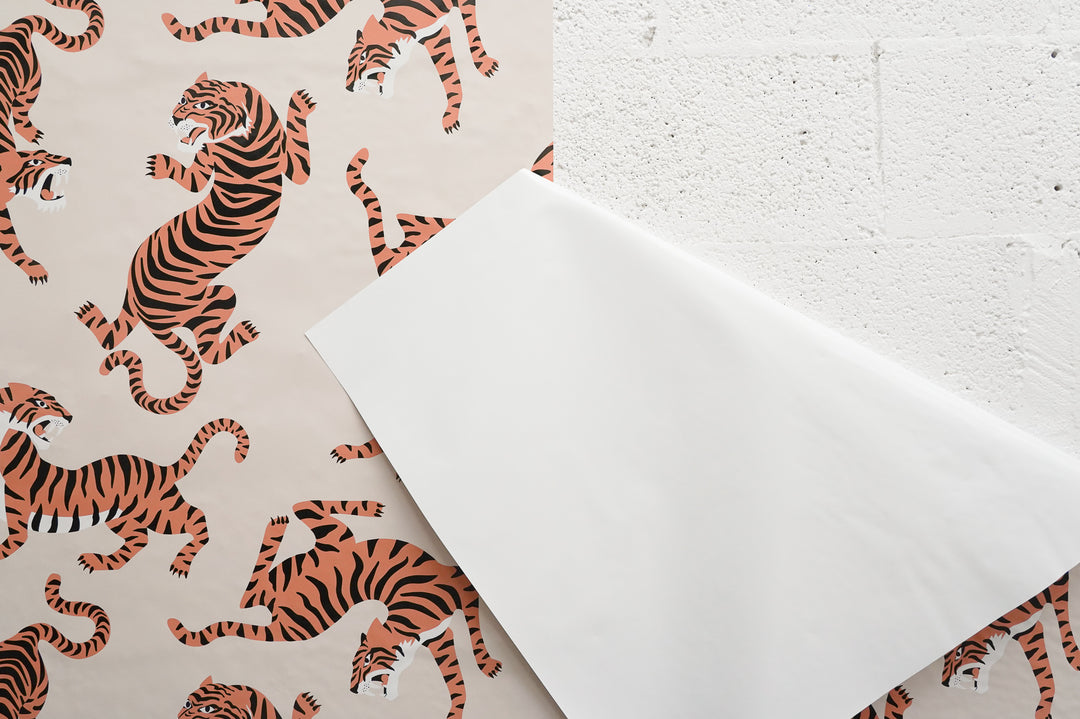Mastering Wallpaper Installation with Tips to Tackle Seam Openings
When it comes to transforming interiors, wallpaper has been a timeless choice for adding style and personality to a space. However, one common issue that can arise over time, particularly with traditional wallpaper materials, is the development of seam openings. In this article, we'll explore the causes behind seam openings and provide practical tips to address and prevent this challenge for a long-lasting and flawless wallpaper installation.

Understanding Seam Openings: Seam openings occur when the edges of wallpaper strips fail to stay tightly joined together. This issue can manifest as visible gaps or lifted edges, detracting from the seamless appearance that a well-installed wallpaper should have. Several factors contribute to the development of seam openings:
Humidity and Temperature Fluctuations: Changes in environmental conditions, such as humidity and temperature fluctuations, can impact the adhesive's ability to maintain a strong bond.
Substrate Issues: The type and condition of the wall surface can affect how well the wallpaper adheres. Uneven or porous surfaces may lead to inconsistent adhesion along the seams.
Quality of Adhesive Used: The choice of adhesive plays a crucial role. Using a high-quality adhesive suitable for the specific wallpaper material is essential for long-term durability.
Prevention Strategies
To ensure a seamless and enduring wallpaper installation, consider the following prevention strategies:
Proper Wall Preparation:
Clean the wall thoroughly, removing any dust or debris.
Patch and smooth out imperfections to create a uniform surface.
Humidity Control:
Maintain a stable indoor environment to minimize humidity fluctuations.
Consider using a dehumidifier in areas prone to high humidity.
Quality Adhesive Selection:
Choose an adhesive recommended by the wallpaper manufacturer.
Ensure the adhesive is evenly applied to the entire surface.
Professional Installation:
Hire experienced and skilled professionals for the installation.
Properly align and match patterns to reduce stress on seams.
Painting the Wall:
Consider painting the wall with a color similar to the wallpaper before installation. This helps conceal any potential seam openings that may occur over time.

Addressing Existing Seam Openings
If seam openings have already occurred, here are steps to address the issue:
Re-adhere with Adhesive:
Lift the edges gently and apply a small amount of wallpaper adhesive.
Press the seams back into place and smooth out any air bubbles.
Use a Seam Roller:
Roll over the seams with a seam roller to ensure a firm bond.
Colored Paint Solution:
In cases where seam openings persist or become noticeable, consider using colored paint that matches the wallpaper.
Apply the colored paint along the seams to blend and conceal any gaps, creating a cohesive and aesthetically pleasing finish.
Consult a Professional:
If the issue persists, consult a professional installer to assess and address the underlying causes.
Seam openings in traditional wallpaper installations can be a common challenge, but with proper preparation, quality materials, and attention to detail, it's possible to achieve a stunning and long-lasting result. By understanding the factors contributing to seam openings and implementing preventative measures, including the use of colored paint for touch-ups, you can enjoy the beauty of your wallpaper for years to come.










Leave a comment